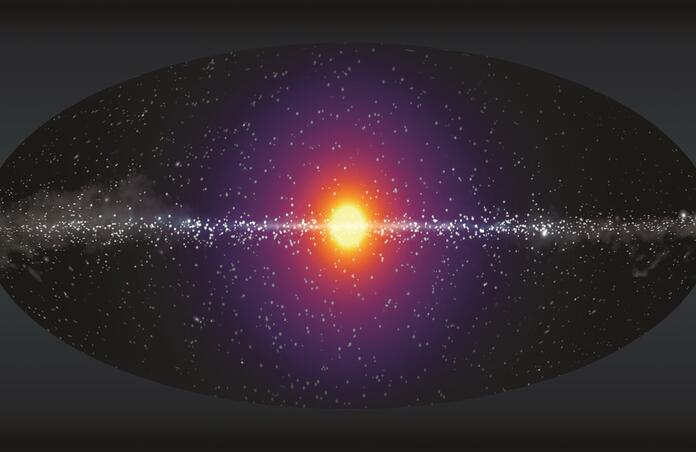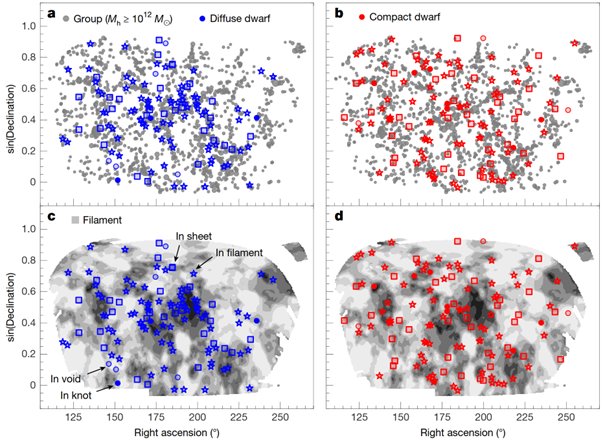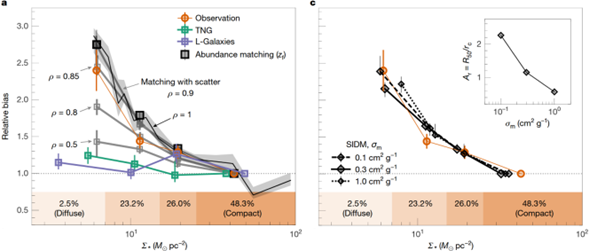Dwarf Galaxy Clustering Anomalies Suggest Dark Matter Self-Interactions

Our standard model of cosmology, known as ΛCDM, is predicated on the existence of dark matter (DM), introduced to explain a variety of observational discrepancies, such as the unexpectedly fast rotation of galaxies, gravitational lensing patterns, and the distribution of cosmic structures. This hypothesis is supported by both theoretical modelling and extensive astronomical observations. Dark matter particles are thought to interact primarily through gravity, and possibly the weak nuclear force, while not participating in electromagnetic or strong nuclear interactions. In many models, these particles are weakly interacting, if at all, which leads to their classification as weakly-interacting massive particles (WIMPs). This extremely limited interaction helps explain why dark matter has proven so difficult to detect directly.
However, a new study led by Ziwen Zhang calls this assumption into question. His team investigated a sample of dwarf galaxies from the New York University Value Added Galaxy Catalogue within the Sloan Digital Sky Survey (SDSS) Data Release 7. They selected only isolated, late-type dwarf galaxies with stellar masses between 107.5 and 109 M☉ to avoid complications from interactions within groups or clusters. The sample was carefully filtered to exclude red, compact galaxies, focusing instead on blue, star-forming systems. Galaxies were further divided based on their surface stellar mass density, which quantifies how concentrated or diffuse the stars appear within the galaxy.

Their work is built upon a galaxy two-point correlation function, which quantifies the excess probability, relative to a random distribution, of finding a pair of galaxies separated by a given distance. This function encapsulates how galaxies cluster regardless of individual properties and can be derived within our cosmological model, allowing comparison with observed galaxy clustering to test the model’s accuracy.
While the galaxy correlation function is a well-established tool in cosmology, Zhang et al. identified an unexpected pattern within their sample of dwarf galaxies. They found that galaxies with lower surface mass densities, those that appear more diffuse, exhibited stronger clustering than their more compact counterparts. This is surprising, as diffuse galaxies are typically associated with low-mass haloes that form later in cosmic history, and thus should reside in less clustered environments. Instead, Zhang et al. found that these galaxies are more strongly associated with large-scale, clustered structures, implying that they inhabit older haloes, which challenges standard models of galaxy formation.

One possibility the team explores is that of self-interacting dark matter. In this model, dark matter consists of self-interacting massive particles (SIMPs), capable of interacting with itself, but not with other known particles. This causes higher internal pressures, allowing haloes to puff up. This effect would be particularly pronounced in older structures, where this internal scattering has had more time to operate. This could explain why we see these more diffuse galaxies within older structures.
At this point, their conclusions remains largely speculative. However, they state that their preliminary calculations provide strong evidence that SIMP models cannot be fully discounted as an explanation for dark matter. They express interest in future investigations that should utilise full hydrodynamical simulations of galaxy evolution under this framework.
--
Journal Source: Z. Zhang et al., Unexpected clustering pattern in dwarf galaxies challenges formation models, Nature Astronomy, (2025), DOI: https://doi.org/10.1038/s41586-025-08965-5
Cover Image Credit: C. Dessert, N. L. Rodd, B. R. Safdi, Z. Rostomian (Berkeley Lab); based on data from the Fermi Large Area Telescope.
